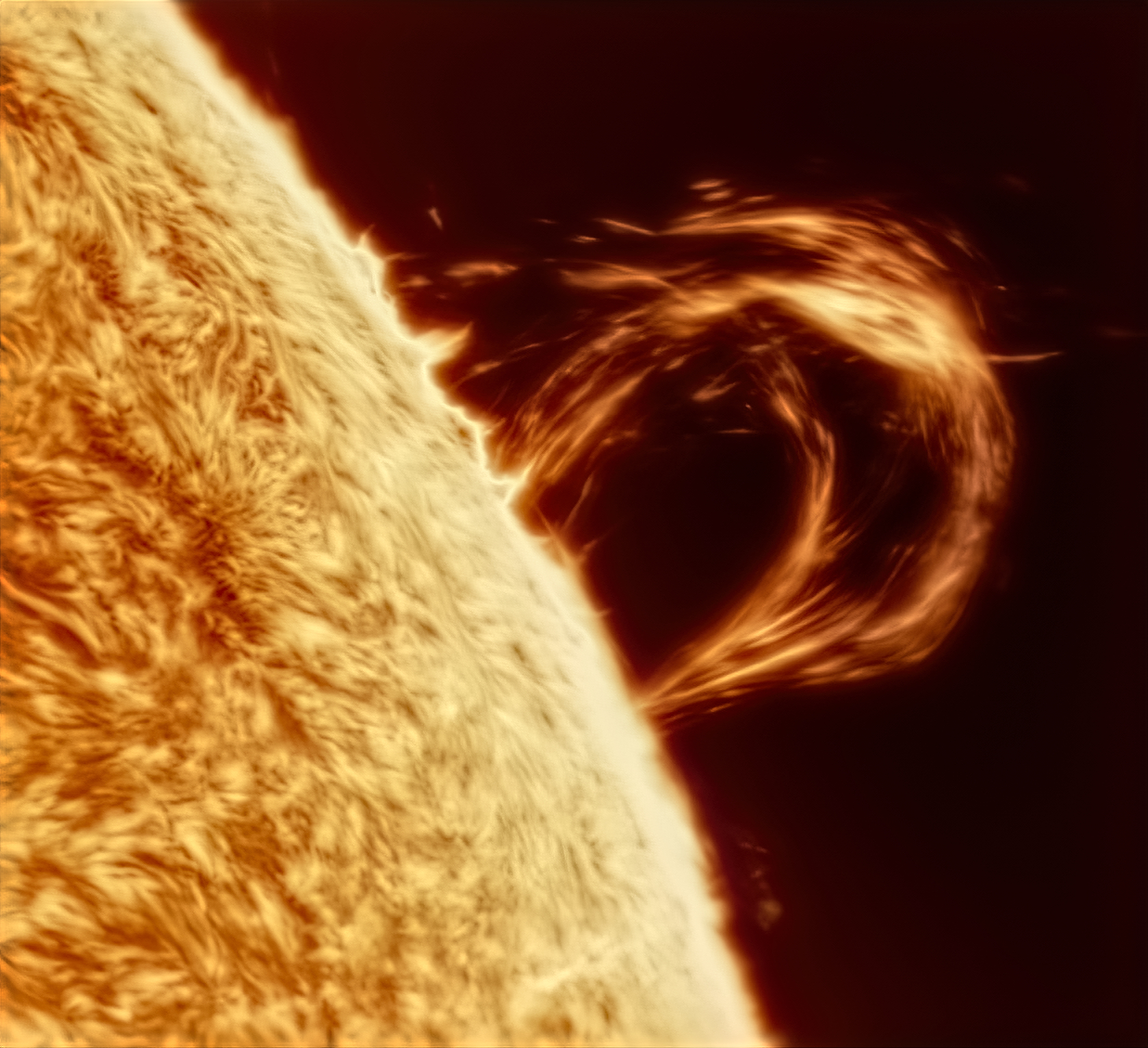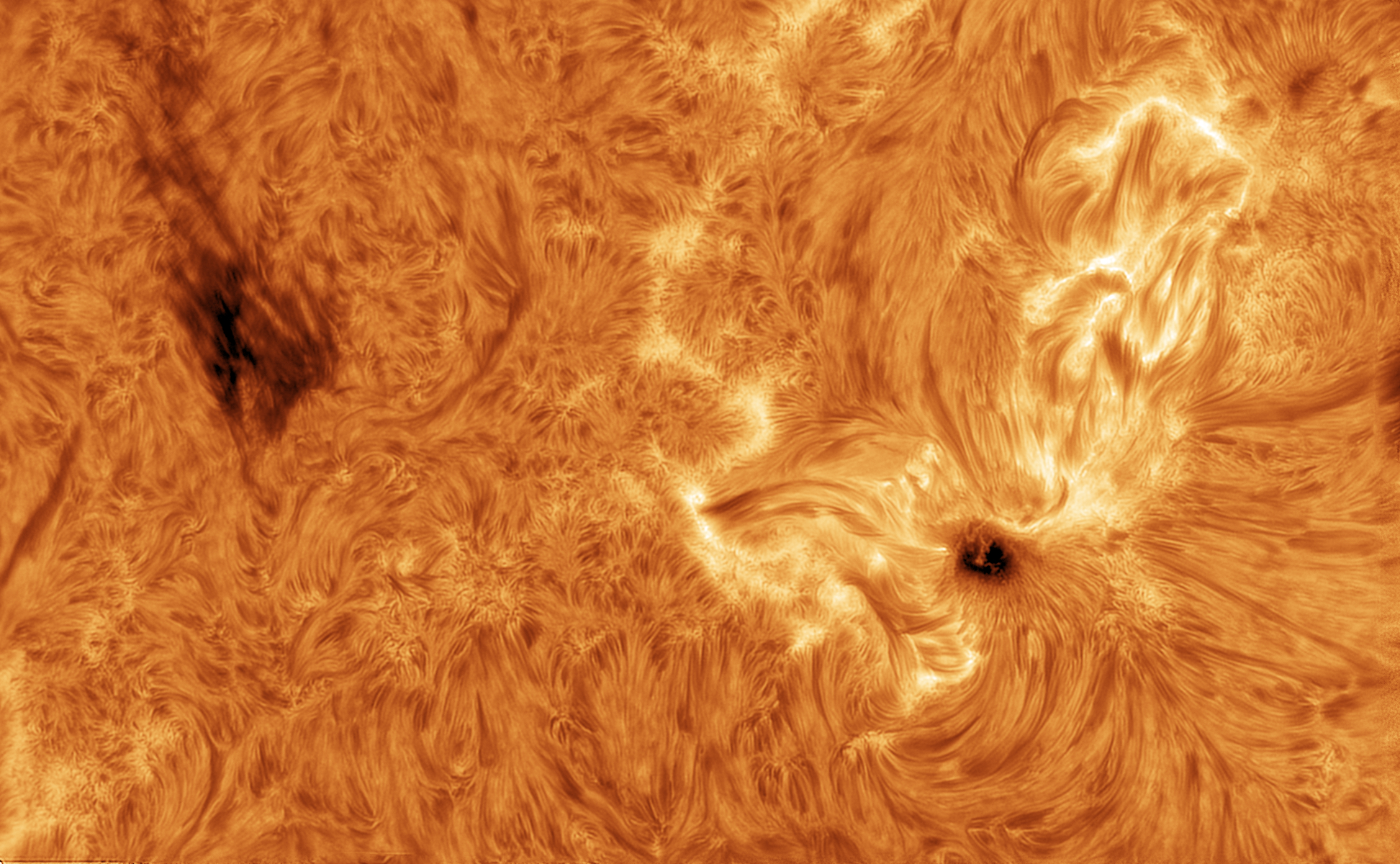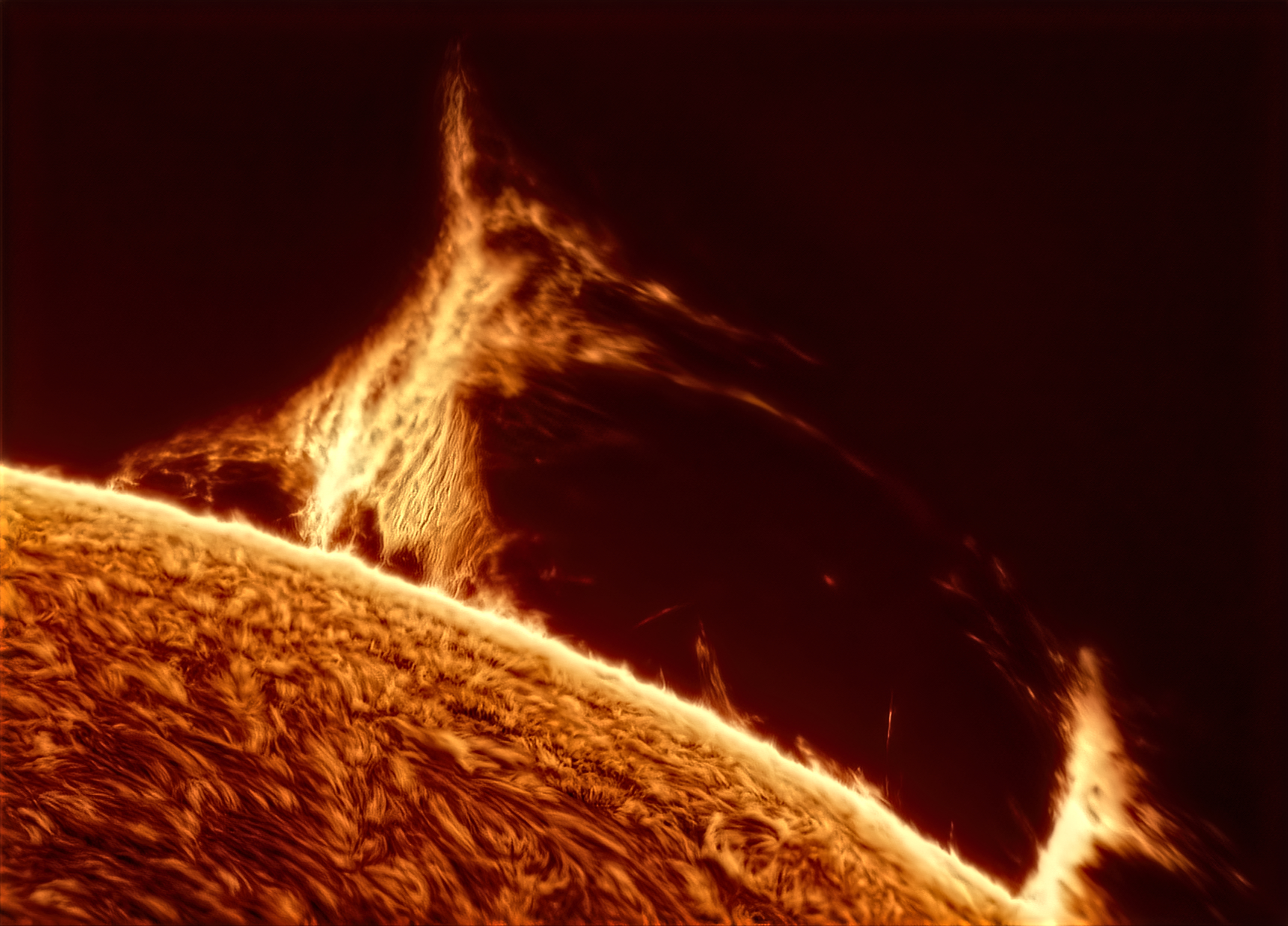Veteran astrophotographer and NASA Solar System Ambassador Mark Johnston managed to capture an incredible image of the sun from his backyard in Scottsdale, Arizona.
“We started by putting images from a camera mounted on a telescope onto a TV via a computer at COVID-19 awareness events so people wouldn’t have to line up to look through the telescope,” Johnston told Digital Camera World. “Then we started saving the images, and it just grew from there.”
We are currently in the midst of the first solar maximum since 2014, the peak of solar activity in the sun’s roughly 11-year cycle, and is expected to last until January 2025.
During this period, the average number of sunspots on the Sun’s surface increases and magnetic phenomena occur that can cause solar flares and solar storms called coronal mass ejections (CMEs).
During this period of increased solar activity, astrophotographers like Johnston grab their cameras in hopes of seeing something spectacular.
Arizona in particular is a very popular spot for astrophotographers because of its good weather and clear night skies, and the mountains provide a way to get above the thicker parts of the atmosphere.
“I’ve been photographing the Sun for many years,” Johnston said, “and recently built a large-aperture, custom-built solar telescope that I was eager to test. These images were all taken in July 2024.”
Get the best camera deals, reviews, product advice and unmissable photography news straight to your inbox.

To capture the sun in such detail, Johnston uses a special process and kit.
- “A 160mm refracting telescope. It has an energy reflecting filter over the objective lens to protect it from the sun.
- “After the concentrator are two hydrogen alpha etalons to separate the 656.28 angstrom wavelength.
- “Then, a special high-speed monochrome astronomical camera
- “I focus on the sun and adjust the etalon to maximize contrast.
- “Capture 2000 x 10ms frames [milliseconds, not fractions of a second, are used in the software]
- “Use software to extract and stack the best 200 frames.
- “Then we further sharpen, denoise and adjust the photo.”

The picture we’re looking at shows “a high-resolution image of the Sun’s chromosphere,” “showing prominences and spicules at the Sun’s edge, filaments and sunspots on the surface, and vigorous plasma activity,” Johnston said.
Recent aurora sightings This is most likely due to recent solar activity and the presence of sunspots. Electric charges created by solar storms collide with gases in Earth’s atmosphere, primarily oxygen and nitrogen. Oxygen atoms glow green, the most common color seen in the aurora, while nitrogen atoms glow purple, blue, and pink.

Johnston said:
“Photographing the Sun is very interesting because it is the only object in astronomy that looks different every time you take a picture of it. The Moon, planets, galaxies and star clusters are always more or less the same, with rare exceptions like supernovae. But the Sun can suddenly spit out a prominence in 30 minutes.”
If you want to get out and capture images yourself during this unusual period in the sun’s orbital cycle, Johnston recommends getting familiar with using visual astronomy equipment.
“Reach out to photographers whose work you like and ask for advice.”
He also has a wealth of information on how to capture amazing images as well. Youtube channel, translator.
Check out the guide The best cameras for astrophotography, The best lenses for astrophotographyand the The perfect star tracker camera mount for astrophotography.


